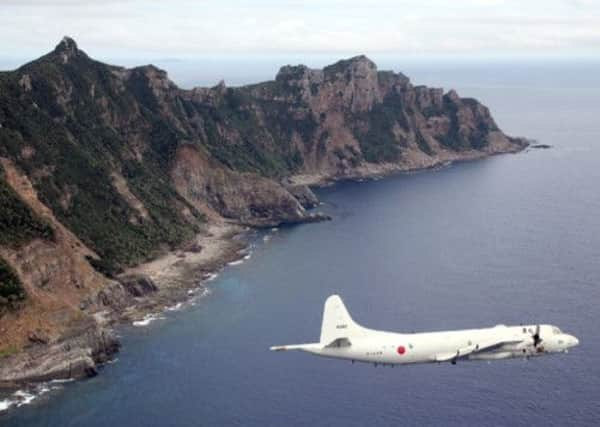More US allies defy China’s air defence zone


China’s lack of a response to the flights – including two US B-52 bombers that flew through the zone on Tuesday – has been an embarrassment for Beijing. Even some state media outlets suggested yesterday that the government and military may have miscalculated.
“Beijing needs to reform its information release mechanism to win the psychological battles waged by Washington and Tokyo,” the Global Times, a tabloid published by the Communist Party’s flagship People’s Daily, said in an editorial.
Advertisement
Hide AdAdvertisement
Hide AdBeijing began demanding on Saturday that passing aircraft identify themselves and accept Chinese instructions or face consequences in an East China Sea zone that overlaps a similar air defence identification zone overseen by Japan since 1969 and initially part of one set up by the US military.
But when tested just days later by American B-52 flights – with Washington saying it made no effort to comply with China’s rules, and would not do so in the future – Beijing merely noted, belatedly, that it had seen the flights and taken no further action.
South Korea’s military said yesterday its planes flew through the zone this week without informing China and with no apparent interference. Japan also said its planes have continued to fly through it after the Chinese announcement, while the Philippines, locked in bitter dispute with Beijing over South China Sea islands, said it also rejected China’s declaration.
Analysts question China’s technical ability to enforce the zone due to a shortage of early warning radar aircraft and in-flight refuelling capability. However, many believe China has a long-term plan to win recognition for the zone with a gradual ratcheting-up of warnings and eventual enforcement action.
“With regard to activity within the zone, nothing will happen … for a while,” said June Teufel Dreyer, a China expert at the University of Miami. “Then the zone will become gradually enforced more strictly. The Japanese will continue to protest, but not much more, to challenge it.”
That may wear down Japan and effectively change the status quo, she said. The zone is seen primarily as China’s latest bid to increase its claim over a string of uninhabited Japanese-controlled islands known as Senkaku in Japan and Diaoyu in China.
The zone comes at an awkward time. Although Beijing’s ties with Tokyo are at rock bottom, it was building goodwill and mutual trust with Washington, following a pair of successful meetings between President Barack Obama and new Chinese president Xi Jinping.
On Saturday China issued a list of requirements for all foreign aircraft passing through the area, regardless of whether or not they were headed into Chinese airspace, and said its armed forces would adopt “defensive emergency measures” against aircraft that didn’t comply.
Advertisement
Hide AdAdvertisement
Hide AdBeijing said the notifications are needed to help maintain air safety in the zone. However, the fact that China said it had identified and monitored the two US bombers during their Tuesday flight seems to discredit that justification for the zone, said Rory Medcalf, director of the international security programme at Australia’s Lowy Institute.
“This suggests the zone is principally a political move,” Mr Medcalf said. “It signals a kind of creeping extension of authority.”